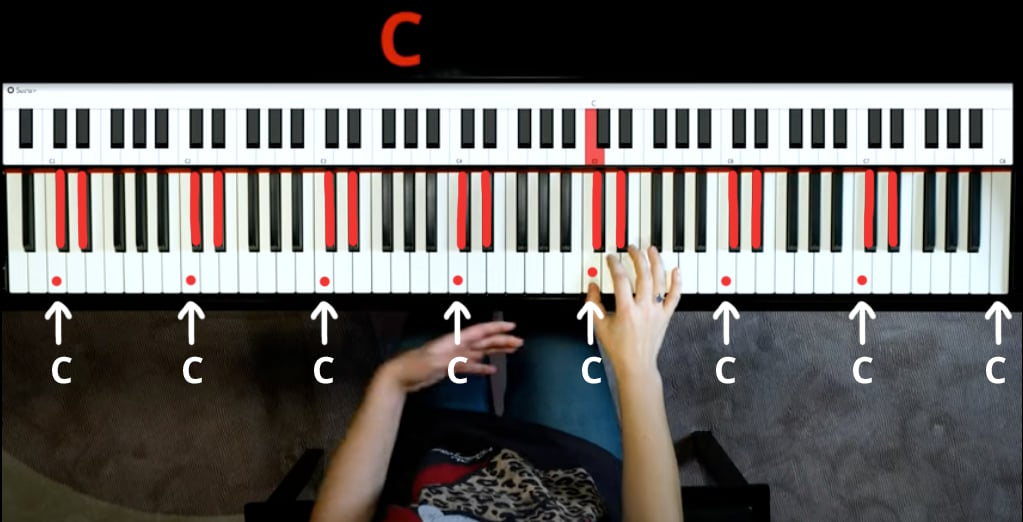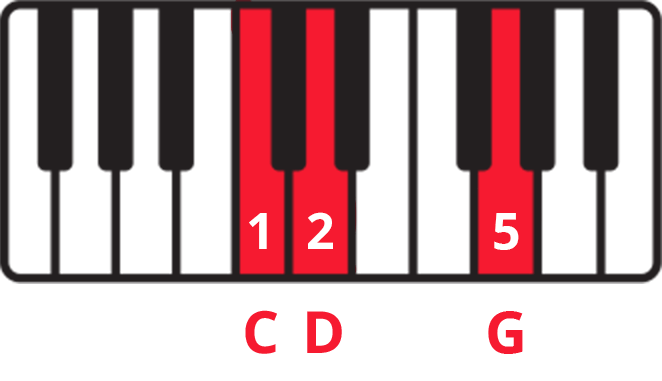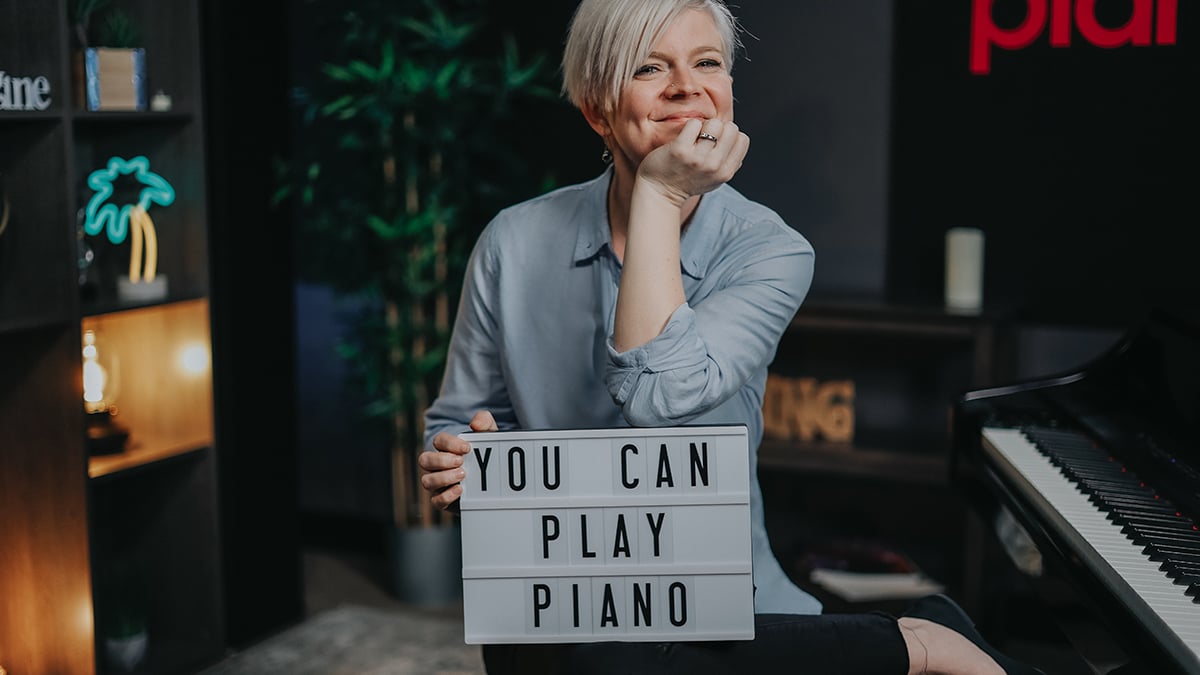You don’t need decades of experience to sound amazing on the piano.
In this exercise, I’ll teach you a quick and simple way to start playing something beautiful on the piano. All within five minutes.
You don’t need any experience to do this! You don’t need to know how to read music either. But if you do have experience playing piano, you can do this too!
Get free lessons, tips, and piano news delivered to your inbox every week. Subscribe to The Note!
First things first: let’s find our notes! We’ll place our thumb on the C above Middle C.
Here’s how you find it: see those groups of two black keys on the keyboard? The white key on the bottom-left of them is always C. We’ll place our thumb on C5, which is the fifth C from the left.

Then, we’ll put finger 2 (index) on D, which is the note right after C. And we’ll put finger 5 (pinky) on G, which is where your hand should naturally fall if you line your fingers up with the keys.

Play these notes together (solid).
It’s a dreamy sound! And if you want to make it even dreamier, try using the pedal and playing as softly as you can.
For those who are interested in theory, what we’re playing is called a Csus2 chord. You can learn about what that means here.
Now let’s pair our Csus2 chord with some left hand notes. Here’s your only rule: any of the white keys will sound good!
For example, try moving from C to A to G to F.
If you’re ever in doubt, playing C (home base, because we’re technically in C Major) will always sound good.
This is where the magic of the sus chord comes in. Try playing each note in your right hand separately. Doesn’t that sound so beautiful?
Play what you were playing before with your left hand. You can try octaves once you’re more comfortable — two As at once, for example.
Octaves help you build some intensity. Experiment with dynamics (loudness and softness) too.

Get started on the right foot (or rather, hand). Get four FREE lessons that will take you from sitting down on the piano for the first time to playing your first song.
When things feel more familiar to you, try challenging your hand independence by doing fancier things with your left hand.
For example, try playing fifth patterns in your left hand. This means playing the fifth note between octaves. For example:
C – G – C
A – E – A
G – D – G
F – C – F
And don’t forget your right hand. You can move everything there up an octave for a slight change of mood, or move between solid and broken chords.
If you’re feeling in, say, a D Major mood today, you can apply the same principles here to D Major.
You’ll need to know a little bit about key to do this, but the right hand notes for D Major, for example, are:
D – E – A
With the right tools, anyone can sit down at the piano and play something beautiful in five minutes or less.
If you found this lesson inspiring, check out similar lessons we have that require almost no musical knowledge:
Happy playing and practicing!
Lisa Witt has been teaching piano for more than 20 years and in that time has helped hundreds of students learn to play the songs they love. Lisa received classical piano training through the Royal Conservatory of Music, but she has since embraced popular music and playing by ear in order to accompany herself and others. Learn more about Lisa.
/marketing/pianote/promos/april/banner-bg-m.webp)
We use cookies for traffic data and advertising. Cookie Policy »
/marketing/pianote/promos/april/banner-title.webp)